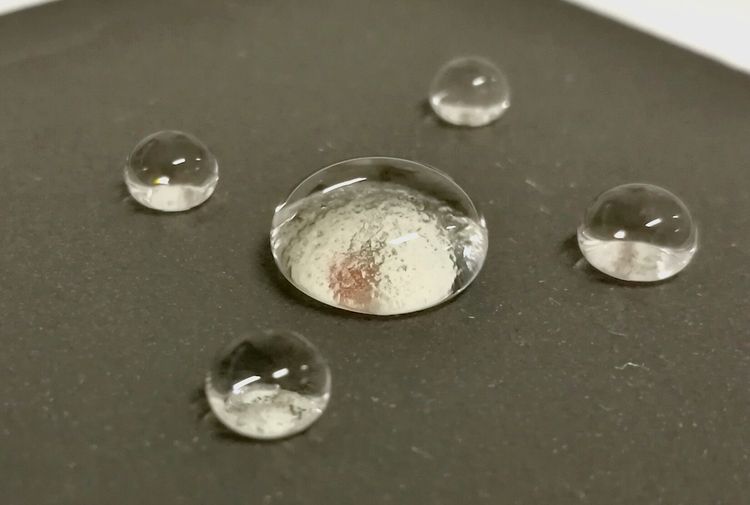Reference: WO 2012/117386
Inventors: Mariarosa Raimondo, Federica Bezzi, Magda Blosi, Claudio Mingazzini
Applicants: Consiglio Nazionale delle Ricerche (60%); Agenzia Nazionale per le Nuove Tecnologie, l’Energia e lo Sviluppo Economico Sostenibile ENEA (40%)
Filing date: 05/03/2012
Contact: Mariarosa Raimondo
Method for the treatment of ceramic surfaces to impart repellence towards water (hydrophobicity) and low-surface tension liquids (oleophobicity). The method comprises in succession :
- a deposition step, in which applied on a ceramic surface is a coating including a metal oxide comprised in the group made up of alumina, silicon dioxide, zirconium dioxide, titanium dioxide, mullite, zinc oxide, yttrium oxide and mixtures thereof;
- a first consolidation step, in which the coating is subjected to a temperature of between 150°C and 900°C;
- a functionalization step, in which the coating is treated with boiling water and/or with steam for the production of hydroxyl groups;
- a second consolidation step, in which the coating is subjected to a temperature of between 150°C and 900°C;
- a fluorination step, in which the coating is treated with a fluorinated compound; and
- a third consolidation step, in which the coating is subjected to a temperature of between 100°C and 300°C.
Claims
- A method for the treatment of ceramic surfaces comprising in succession:
◦ a deposition step, in which applied on a ceramic surface is a coating including a metal oxide comprised in the group made up of alumina, silicon dioxide, titanium dioxide, mullite, zinc dioxide, zirconium dioxide, oxide, yttrium oxide, and mixtures thereof;
◦ a first consolidation step, which coating is subjected to a temperature of between 150°C and 900°C;
◦ a functionalization step, in which said coating is treated with boiling water and/or with steam for the production of hydroxyl groups;
◦ a second consolidation step, in which said coating is subjected to a temperature of between 150°C and 900°C;
◦ a fluorination step, in which said coating is treated with a fluorinated compound;
◦ a third consolidation step, in which said coating is subjected to a temperature of between 50°C and 300°C;
said method being characterized in that the deposition step envisages the use of a sol obtained starting from a colloidal suspension by means hydrolysis and condensation of one or more metal alkoxides M(OR)n in the water wherein:- M is comprised in the group made up of Al, Ti, Si, Y, Zn, Zr; and
- R is a linear or branched aliphatic chain Cl-C4.
- The method for the treatment of ceramic surfaces according to Claim 1, characterized in that said sol is deposited by means of a technique chosen in the group constituted by dip coating, spray coating, and spin coating.
- The method for the treatment of ceramic surfaces according to Claim 1 or Claim 2, characterized in that said colloidal suspension is obtained in water or in a solvent comprised in the group made up of isopropyl alcohol, ethyl alcohol, or methyl alcohol, dispersed in which is a chelating agent designed to chelate the metal of the alkoxide.
- The method for the treatment of ceramic surfaces according to Claim 3, characterized in that said chelating agent is a bidentate chelating agent.
- The method for the treatment of ceramic surfaces according to Claim 4, characterized in that said chelating agent is ethyl acetate.
- The method for the treatment of ceramic surfaces according to any one of the preceding claims, characterized in that said coating has a thickness of between 50 and 500nm.
- The method for the treatment of ceramic surfaces according to any one of the preceding claims, characterized in that in said fluorination step said coating is treated with a fluorinated compound by means of a technique of dip coating or spray coating or spin coating.
- The method for the treatment of ceramic surfaces according to Claim 7, characterized in that said fluorinated compound is a fluoroalkyl silane.
- An industrial ceramic comprising a coating obtained by means of the method according to any one of the preceding claims.

